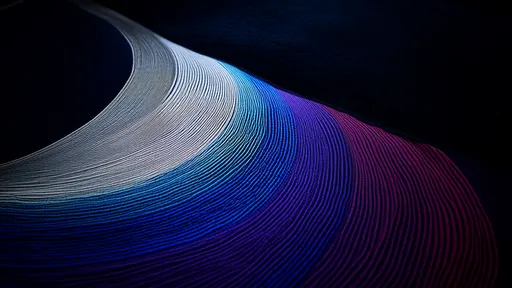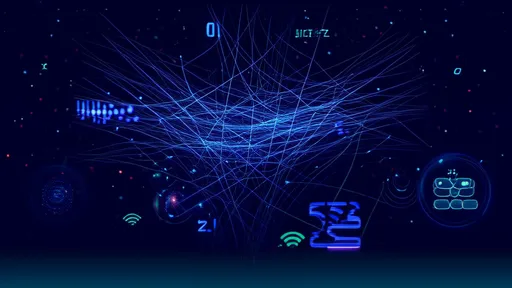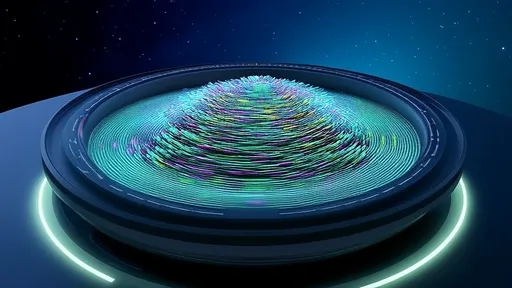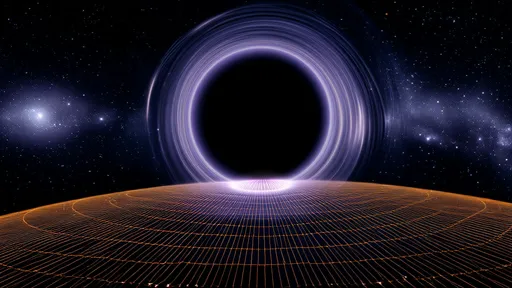The night sky has always been humanity's first canvas of wonder, but what we perceive as twinkling dots of white light actually contain hidden patterns more intricate than the finest Persian rug. Modern astrophysics has revealed that starlight carries encoded information in its spectral fingerprints - a celestial tapestry woven from the warp of emission lines and weft of absorption bands across the electromagnetic spectrum.
The Loom of Creation
Every star operates as a cosmic Jacquard loom, its fiery heart punching electromagnetic patterns onto the fabric of light. The violent ballet of superheated plasma generates a continuous spectrum, while quantum interactions in the stellar atmosphere selectively subtract specific wavelengths like a dyer removing color from thread. This creates the dark absorption lines first noted by Fraunhofer in 1814 - the foundation of spectral classification.
Astronomers now recognize these patterns as both identifier and autobiography. A star's temperature announces itself through the overall color gradient from violet to red, while the particular arrangement of absorption lines reveals its elemental composition like chemical barcodes. The hydrogen Balmer series forms the backbone of this encoding system, with metals providing decorative flourishes that vary according to stellar metallicity.
The Weaver's Palette
Modern instrumentation has expanded our perception of this cosmic textile. Where early spectroscopists worked with the narrow visible spectrum, today's telescopes detect wavelengths from radio waves to gamma rays. Each region tells a different chapter of the stellar story: ultraviolet reveals the frenetic activity of young stars, infrared exposes cool molecular clouds, and X-rays trace the violent deaths of massive stars.
Particularly fascinating are the forbidden lines - spectral features that shouldn't exist according to laboratory physics. These occur in the tenuous reaches of stellar atmospheres or nebulae where atoms may wait hours between collisions, allowing normally prohibited quantum transitions. Like unexpected thread colors in a tapestry, they signal extreme physical conditions.
Pattern Recognition Across the Galaxy
The classification scheme developed at Harvard in the early 20th century (OBAFGKM) remains astronomy's Rosetta Stone for stellar spectra. But contemporary researchers have discovered subtler patterns within these broad categories. The presence or absence of certain lines can indicate a star's rotation rate, magnetic field strength, or whether it has consumed planetary companions.
Binary stars create especially complex spectral tapestries as their light intermingles. Eclipsing binaries produce time-variable spectra where lines appear and disappear like threads in a Jacquard mechanism. Spectroscopic binaries reveal themselves through the Doppler shifting of absorption lines as the stars orbit, creating oscillating patterns that allow astronomers to reconstruct their dance.
Decoding Stellar Histories
Advanced spectral analysis now permits something akin to carbon dating for stars. The relative strengths of certain metal lines act as chronometers, revealing whether a star formed in the early universe or more recently from enriched material. Rare earth elements appear as delicate embroidery in the spectra of certain red giants, betraying slow neutron capture processes in their cores.
Perhaps most remarkably, asteroseismology allows researchers to detect resonant frequencies in stars through subtle, periodic variations in spectral line shapes and positions. These stellar vibrations create patterns analogous to the moiré effects seen in overlapping fabrics, exposing internal structure invisible to direct observation.
The Tapestry's Dark Threads
Not all spectral features originate from the stars themselves. Interstellar medium leaves its mark through diffuse bands and the telltale sodium D line doublet - the accumulated fingerprints of countless atoms encountered during light's long journey. These features shift independently from stellar lines, allowing astronomers to map the galaxy's structure.
More mysterious are the broad absorption features of unknown origin dubbed "Diffuse Interstellar Bands." First noticed in 1922, these stubbornly resisted identification until recent years when large organic molecules like buckminsterfullerene were finally matched to some features. They represent the soot of ancient stellar furnaces spread across the galactic loom.
New Looms, New Patterns
The next generation of extremely large telescopes will unravel finer details in the stellar tapestry. High-resolution spectrographs like those planned for the Thirty Meter Telescope may detect spectral signatures of exoplanet atmospheres reflected in their host stars' light - the ultimate pattern within the pattern.
Meanwhile, machine learning algorithms are being trained to recognize subtle spectral features that human researchers might miss. These artificial intelligences act like automated loom pattern readers, discovering new correlations between spectral characteristics and stellar properties in vast surveys like APOGEE and GALAH.
From the earliest prism experiments to modern multi-wavelength surveys, the study of stellar spectra remains astronomy's most potent tool for understanding the universe. Each absorption line and emission feature represents a thread in the grand cosmic tapestry, woven over billions of years by the fundamental forces of nature. As our instruments grow more sophisticated, we continue deciphering this luminous fabric - the ultimate chronicle written in light.

By /Jul 23, 2025

By /Jul 23, 2025

By /Jul 23, 2025

By /Jul 23, 2025

By /Jul 23, 2025

By /Jul 23, 2025

By /Jul 23, 2025

By /Jul 23, 2025

By /Jul 23, 2025

By /Jul 23, 2025

By /Jul 23, 2025

By /Jul 23, 2025

By /Jul 23, 2025

By /Jul 23, 2025

By /Jul 23, 2025

By /Jul 23, 2025

By /Jul 23, 2025

By /Jul 23, 2025